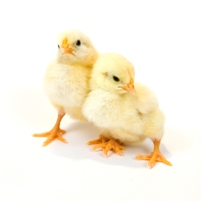Quality needs attention in UK poultry sector

British poultry farmers should pay sufficient attention to the quality and management of the feed they supply for their animals. That general recommendation is in a nutshell the major outcome of a large report on the incidence of nicarbazin in British chicken.
Nicarbazin is a feed additive used for the treatment of coccidiosis.
According to British figures, the incidence of residues has been falling, but
still the industry wanted to know how further reduction could be achieved.
The report, initiated by the British Poultry Council (BPC), the
Veterinary Medicines Directorate (VMD) and the National Farmers Union (NFU)
aimed to find out why residues are still being found in chicken and how to avoid
that. For that reason, samples under the National Surveillance Scheme (NSS) from
February 2007 until February 2008 were tested. In addition, questionnaires were
sent to the farmers involved.
The researchers thus hoped to find out what
influenced nicarbazin incidence and levels.In short, the report gives the
following conclusions:
• Current best practice advice be maintained
•
All levels of farm staff should be trained and refreshed
• Managers remove
existing blame culture to encourage mistake identification and
rectification
• Managers should be aware of the precise amounts of nicarbazin
needed and which feeds contain nicarbazin
• Farms should devise a system to
make sure that any bin that has received feed containing nicarbazin is
completely emptied in the period between the last delivery of nicarbazin
containing feed and five days before the first birds go for slaughter
• Feed
in the feeders should be tested regularly to protect against nicarbazin
residues
Related websites:
British Poultry
Council
Veterinary Medicines Directorate
National Farmers
Union











